THE Power OF WHY











multiple pick options
~ match your skating style
~ less to more aggressive
~ extremely light weight
~ superior torque-resistant strength
stainless steel runner
~ harder than carbon steel
~ creates faster glide & enhanced edge control



~ requires less frequent sharpens
IMITATED, NEVER
tapered edges

~ superior edge control
~ better grip
~ quieter skating performance
PSA OFFICERS
President First Vice President
Second Vice President
Third Vice President Treasurer Past President
PSA BOARD OF GOVERNORS West Mid-West East
Members at Large
Committee on Professional Standards
Ratings Chair
Events Chair
ISI Rep to PSA
U.S. Figure Skating Rep to PSA
PSA Rep to U.S. Figure Skating Summit Chair
Diversity, Equity, &Inclusion Executive Director
COMMITTEE CHAIRS Awards
Coaches Hall of Fame
Education
Accelerated Coaching Partnerships
Area Representatives
Hockey Skating
Sport Science Endorsements
Executive
Executive Nominating Finance
Nominating
Professional Standards PSA Rep to ISI Ratings
Adaptive Skating
Diversity, Equity, and Inclusion
PSA AREA REPRESENTATIVES
Area 1 Tracey Seliga-O'Brien
Area 2 Kimberlie Wheeland
Area 3 Andrea Kunz-Williamson
Area 4 Jill Stewart
Area 5 Angela Roesch-Davis
Area 6 Maude White
Area 7 Nicole Gaboury
Area 8 Jackie Timm
Area 9 Mary Anne Williamson
Rebecca Stump
Tim Covington
Patrick O'Neil
Kirsten Miller-Zisholz
Lisa Hernand
Alex Chang
Michelle Lauerman
Phillip DiGuglielmo
Andrea Kunz-Williamson
Ashley Wyatt
Cheryl Faust
Doug Haw
Denise Viera
Denise Williamson
Peter Cain
Kelley Morris Adair
Cheryl Faust
Danny Tate
Jane Schaber
Heather Paige
Kelley Morris Adair
Teri Klindworth Hooper
Darlene Lewis
Jimmie Santee
Andrea Kunz-Williamson
Alex Chang
Denise Williamson
Debbie Jones
Stacie Kuglin
Gloria Leous
Jordan Mann
Garrett Lucash
Jimmie Santee
Alex Chang
Alex Chang
Lisa Hernand
Alex Chang
Kelley Morris Adair
Gerry Lane
Cheryl Faust
Mary Johanson
Darlene Lewis
Area 10 Francesca Supple
Area 11 Charmin Savoy
Area 12 Roxanne Tyler
Area 13 Liz Egetoe
Area 14 Marylill Elbe
Area 15 Tiffany McNeil
Area 16 Russ Scott
Area 17 Martha Harding
Editor/Advertising Brock Huddleston
Art Director Amanda Taylor

DISCLAIMER: Written by Guest Contributor | PSA regularly receives articles from guest contributors. The opinions and views expressed by these contributors are not necessarily those of PSA. By publishing these articles, PSA does not make any endorsements or statements of support of the author or their contribution, either explicit or implicit.

THE PROFESSIONAL SKATER Magazine Mission: To bring to our readers the best information from the most knowledgeable sources. To select and generate the information free from the influence of bias. And to provide needed information quickly, accurately and efficiently.
The views expressed in THE PROFESSIONAL SKATER Magazine and products are not necessarily those of the Professional Skaters Association.
The Professional Skater (USPS 574770) Issue 5, a newsletter of the Professional Skaters Association, Inc., is published bimonthly, six times a year, as the official publication of the PSA, 3006 Allegro Park SW, Rochester, MN 55902. Tel 507.281.5122, Email: office@skatepsa.com
© 2020 by Professional Skaters Association, all rights reserved. Subscription price is $19.95 per year, Canadian $29.00 and foreign $45.00/year, U.S. Funds.
This season has been a very interesting one thus far for PSA. There are considerable changes ahead for our organization and for our membership. We realize it took some time to get the information out however it has been an incredibly fluid situation and we are committed to providing accurate information to our members. We will continue to communicate with you as we work through the many details that need to be addressed.
By now you should be aware that U.S. Figure Skating is in the developmental stages of empowering the voice of coaches through governance and to bringing coach development, education, and accreditation under their umbrella. This is a considerable change for both organizations. The evolution began when U.S. Figure Skating asked athletes what the most important influence on their skating journey was and the resounding answer was their coach. With coaches being so significant, U.S. Figure Skating felt their strategic plan going forward must reflect coaches, athletes, and officials working together to grow the sport.
We as PSA coaches have long appreciated the extensive influence we have on our athletes and the integral role we play in this sport. And now we embrace U.S. Figure Skating’s plan to finally give coaches a real voice in the U.S. Figure Skating governing structure and to help our coaches and athletes be the best they can possibly be. Together, we are working toward empowering coaches to have a
greater impact on the future growth of figure skating.

So what does this mean for the future of our PSA members? For the past few months, leadership from PSA and U.S. Figure Skating have been working collectively as a team to ensure that the very best of the PSA migrates over to the new U.S. Figure Skating Coaching Membership.
Much has not been finalized at the time of this writing, however both organizations acknowledge the vital educational value our members have received through PSA programs over the decades. We know how much our membership values their PSA Ratings and Rankings and therefore the design team is working to ensure that the PSA Ratings our members have achieved will be transferred and recognized by U.S. Figure Skating. In addition, PSA has formed a team that is tasked with deciding where and how the PSA organization moves forward once U.S. Figure Skating fully takes on coach education and certification, etc. What this boils down to is that you, our treasured membership, will continue to benefit from reliable education and enjoy the endless ability to grow as a coach within figure skating.




The new Gem Series from Riedell take skaters from their rst steps on the ice and beyond! With a new t, new look, new materials, and lightweight outsole, the Riedell Gem Series ensures consistent comfort and performance as skaters progress. ICE.RIEDELLSKATES.COM
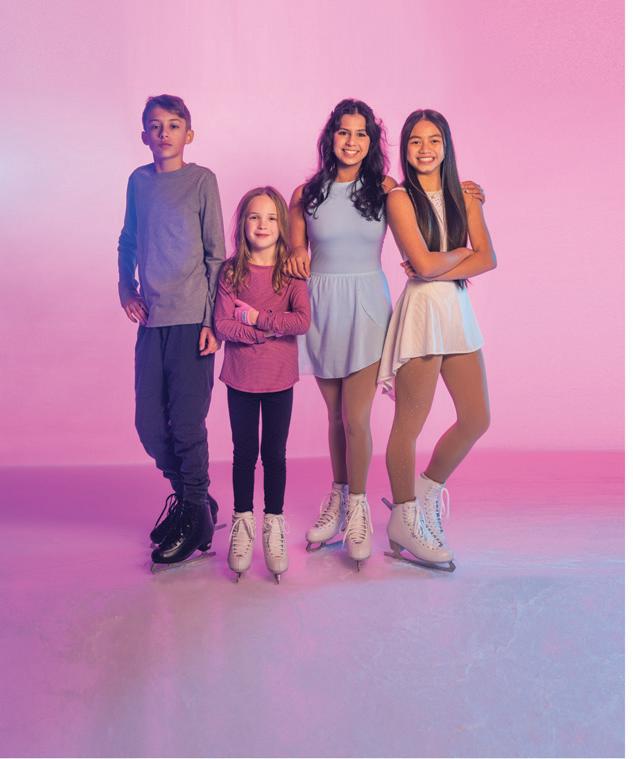
Think back to when you first started coaching and you were handed a list of group lesson names, or maybe when you got a referral for your first private lesson. How did that make you feel? I’m guessing it made you feel pretty good, maybe a little nervous, and it was undoubtedly a feeling you’d never experienced before.

Do you remember those first couple weeks when you were trying to find your way as a new coach and learn as much as you could so you could feel confident? If asked about it, I’m guessing most people would say it was “pretty hard,” “kind of intimidating,” and “a bit overwhelming” trying to meet the expectations you had for yourself and those you felt others had for you.
What if, when you were given that first coaching job, you were also given a handful of letters written by coaches that had come before you? What if you could write a letter to a new coach in the future and you could put into words, “Why I Coach?”
Even though it may have been difficult at times, if you can think of yourself in that “new coach” situation,
you might remember that there was also something very magical about those years of discovery, learning, and striving to prove yourself as a coach. And now, as a more experienced coach, maybe you look at younger, newer coaches on their first day of group classes or freestyle sessions and feel an immediate kinship with that person despite not knowing them well at all.
But what if they did know who you are? What if, when they came to report for their first day, they were handed a notebook of letters written by people who had coached before them and had already been down that path they were about to embark on?
To pass on the experiences and traditions in a positive way, allowing for future coaches to learn from current and former coaches, I propose that we—as PSA coaches—create a collection of stories, letters, and coaching journeys. These letters would be ones that define our legacies, both the ones we inherited and the ones we are leaving.
This year’s overarching education theme has been Window to the Past. Door to the Future. Following this theme, we can:
• pass on the experiences and traditions of the evolution of coaching figure skating in a positive way;
• allow for future members to learn from former and current members; and

• learn the history of the organization, and preserve the passion for coaching.
Writing a Legacy Letter is an excellent way for us to pass on the lessons and traditions learned while coaching in the sport we love. Between the time you get this magazine to the time you get the next one, I would encourage you to sit down and write a letter. Here are a couple ideas to get you started:
• Write a letter to any fellow coach or group of coaches (past or present, still living or to those who have passed on) to express one or more of the following:
› How did the person you’re writing to inspire you or impact your coaching journey?
› Who made you discover something in yourself that you didn’t know was there?
› Who would you like to express gratitude to for something they did for you or said to you?
› What is one question you would like to ask of the person you are writing to? Why?
› How did the person you’re writing to impact your decision to coach and/or your coaching philosophy?
› How did the person you’re writing to, whether athlete or mentor, help you discover the “why” you coach?
• Or, as a long-time, experienced coach, write to future generations of coaches expressing one or
To submit your Legacy Letters, please email it to us at magazine@skatepsa.com or send a physical copy to our office at 3006 Allegro Park Lane SW, Rochester, MN 55902.
more of the following:

› What is your own personal story? How and when did you find your passion for coaching and for the PSA?
› Describe your history with the PSA, including any roles you held or how you served the PSA. Why was that important to you?
› Identify who helped you along your coaching journey. What did they do for you, personally? How did their actions impact your future in coaching?
› Reflect back on what you know now but wish you knew in the past.
› Explain how you would like to help the next generation of coaches succeed.
› What are your hopes for the future of coaching?
› What words of advice would you give or do you feel is essential to pass on to younger coaches?
Write as many letters as you desire of either type. Your letters can be any length, from a few sentences to a few pages. Type it, email it, or hand-write it. If the person you are writing to is still living, send that person a copy.
I also encourage you to send a copy to the PSA. It is our hope to collect and curate these letters to create an actual legacy letters publication, Window to the Past. Door to the Future. If you have photos of you with the person you are writing to, or feel comfortable sending your own photo, please include those, too. We can all grow from reading each others’ letters, and should cherish what has been written by our membership for the treasure that it is.
 Heidi Thibert (MC, MFS, MM, CF) is the PSA Senior Director of Coaching Development and staff liaison to U.S. Figure Skating.
Heidi Thibert (MC, MFS, MM, CF) is the PSA Senior Director of Coaching Development and staff liaison to U.S. Figure Skating.
Submitted by the PSA Committee on Professional Standards
Major corporations spend thousands of dollars to create and improve their brand. When you think of iconic brand names like Nike, AT&T, Microsoft and Walmart, how do you think of them? Does it draw a positive or negative picture? The public forms personal opinions on these companies based on principles, policies, marketing strategies and customer service.
Coaches should employ the same strategies to enhance their brand. Your name is your brand. You are your brand and the quality of your coaching business reflects the quality of your brand. Add a comma and INC. or LLC at the end of your name and you will start thinking of your coaching business differently, a professional business. (Susie Snowflake, LLC). A company with one employee needs to be as organized and structured as a company of one hundred employees.
You need to have a clear and consistent business model of principles, professional standards, policies and practices that create
a safe and ethical environment. You need to work hard to build a business that is reflective of these principles. Start with written policies for best business practices and strategies, stay committed and consistent with them, and you will have the best chance of increasing the longevity of your career. Your brand becomes symbolic of those business practices.
Peruse the accompanying list of coaching policies to consider when developing your best business practices, not only for yourself but also communicating your policies to your clientele.
What makes a brand reliable? In effect, it is to be able to deliver your coaching services in a competent, ethical, educated and responsible manner in time every time. You must consistently make sure that the promise is fulfilled or surpassed. Next up in the Professional Standards Series is The Balancing Act; how to balance a business and your moral and ethical obligations when it is not your only career.
• Coaching Philosophy and Mission Statement
• Defining Roles and Expectations
a. Parent
b. Skater
c. Coach
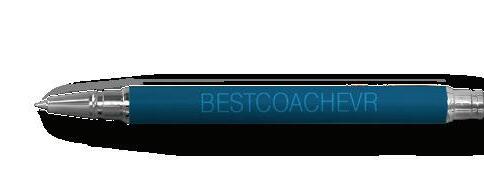
• Communication Policy – Who
a. Parent
b. Legal Guardian
c. No minors
• Communication Policy – When
a. Weekly email
b. Scheduled meeting time
c. Post-lesson briefing
• Communication Policy - Where
a. In person
b. Rink
c. Home – office hours
d. Response time
e. Neutral site

f. Cell phone – text
g. Email
• Achievement Policy
a. Daily practice expectations/ appropriate for level of skater

b. Testing – all disciplines
c. Competitions
• Goal Setting Policy – how often, assessment, adjust
a. Realistic Goals
b. Short–term goals
c. Long-term goals
d. Future strategies
• Coaching Fee Policy
a. Private / semi-private lessons
b. Choreography
c. Competition
• Travel and Accommodation policy
a. Competition
b. Testing

c. Camps

• Additional Services Policy
a. Music editing
b. Costume design
c. Fitting skates
d. Blade mounting
e. Skate Sharpening



• Social Media Policy
a. No skaters under 18
b. No current students
c. Parents
d. No posting without parent consent
e. Parent re-post only (competition/test day)
• Responsibilities
a. To the club
b. To the rink
c. To the community
d. To PSA
e. To U.S. Figure Skating
f. To ISI
g. Yourself (ethics, education, certification)

• Sportsmanship PolicyCoach, Skater, Parent

a. Respect the sport
b. Follow the rules
c. Daily practice sessions
d. Test sessions
e. Competitions – win or lose
• Conflict Resolution Policy
a. Coach and skater
b. Coach and parent
c. Appropriate place and time to discuss
d. Ethical and professional transition for skater
Kelley Morris Adair (MDFD, MM, RFF) is the Professional Standards Committee Chair.Whenever I am asked to help prepare someone for a rating exam, I think it’s always important to start by asking them, “What is your ‘why?’” It can be deeply motivating, and it’s a great place to start.
But if you haven’t started your ratings journey yet, or if you started the journey but haven’t pushed yourself to finish it, I think the most important question is not what your “why” is, but more importantly…why not?
Imagine just for a moment one of your little skaters taking their very first figure skating test. They are nervous, intimidated, and fearful of a new situation. As a coach you are an expert in preparing that skater for their test. You have taken the time to explain and teach each move, the order of the test, what they should wear, and when they should arrive. No stone was left unturned.
What if you coached yourself just like you coached this little skater? Think of how proud you would be of yourself afterwards. Researching answers, talking to other coaches, thinking through your technique, being able to articulate your answers…you are only making yourself a better coach!
I can imagine why the ratings process can seem intimidating for a lot of people. Being judged in front of three master coaches can seem daunting. But what you have to remember is that your examiners are also coaches, too. We are here to encourage and support you. On the inside, we are cheering for you and want you to do well! Isn’t that what you would say to your little skater?
What should also supersede your fear is your ability to research the answers to the questions from the ratings study guides. Remember that the study guides are a free resource for you. You can review them and print them out at any time. (All of our study guides can
be accessed at www.skatepsa.com/ratings.) This gives you a great insight to the exam content and structure, so you know exactly what will be asked of you. If there are questions that you get stuck on during your research, remember that you can reach out to any master examiner at any time!
We are all busy. Fortunately, we get to work as much or as little as we like. If you want your level of clientele to increase, then your level of education and professionalism has to increase, too. As your level of education and understanding of your own coaching technique increases, your athletes will not only succeed, but they will excel faster, be more confident in themselves, and have the opportunity for a longer career. That is worth taking the time for! Even if you set aside a designated small amount of time each week to study, or if you record yourself talking to your athletes in your lessons to see how you could improve your communication, you’re already on your way!
Now that ratings are virtual, there is no cost to travel. Now you can take your ratings from the comfort of your own home and you don’t have to take time off work to travel around the country to different exam sites. Ratings have never been more affordable.
As part of the study process, did you know we also offer a library of e-learning courses, monthly webinars, and streaming content through PSA TV? All of these resources are available to you at a nominal cost, and many of them could be free depending on your membership level. When you spend money to educate yourself, the rewards are so much greater than the money you spend. And whether you realize it or not right now, it will benefit you tenfold in the future.

Think about this…
» Why would a skater choose you to be their coach?
» What makes you stand out?
» What makes you unique?
Maybe you are in a small club or rink. Or, maybe you are in a large facility with many coaches on staff. Either way, ask yourself why clients would choose you over other coaches?
Rink management and skating directors who are willing to do the research to find the best coaches possible for their facilities are looking for the same thing that parents who want the best coach for their kids are looking for—PSA members like you who believe in continuing education, who are constantly striving to learn more, and who seek and obtain their ratings.
In my opinion, obtaining ratings can be the equivalent of earning another college degree. I am proud of everything that went into that journey…it took a lot of time and energy, a lot of money, and a lot of research. It wasn’t easy, but it was so worth it! I know that you will be just as proud of yourself for going through the same process. Whether you’re in an environment that values ratings or not, it is an accomplishment worth being proud of that you can take anywhere.
We are here to help you on your ratings journey no matter what your “why” is!
If you are already rated…congratulations. If you are on your ratings journey…keep going! Educating yourself is the best investment you can make. And, if you haven’t started your ratings journey yet ask yourself…why not?

We look forward to seeing you in a rating exam soon!
Still not convinced? After a candidate takes a rating exam, we ask them to fill out a survey to provide feedback on the experience. One of those questions asks why that person chose to pursue a new rating. Here are what some recent ratings candidates had to say:

“Preparing for the exam helped me to better organize my methodology for teaching Moves in the Field and encouraged me to look at the bigger picture on how [the way] I teach elements will impact the skater down the road and in other disciplines. Completing this exam will also be a way for skaters, parents, and other coaches to be assured that I am qualified to teach the levels I was rated in.”
“I want[ed] to gain more knowledge and better serve my students as a coach. I also love learning, especially when it comes to skating.”
“My examiners were very knowledgeable and made me feel comfortable while taking the virtual exam. I would recommend all coaches take these exams to assure and adhere to solid coaching techniques for all skating disciplines.”
Cheryl Faust (MFS, MM) is the Ratings Committee Chair“... what you have to remember is that your examiners are also coaches, too. We are here to encourage and support you.”
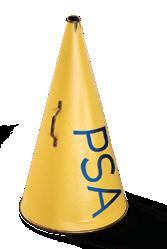
Madison Bedwell
Margit Erkkila
Ashley Gaskin
Ann Hulme
Eleftheria Loughlin
Richard Alexander RG
Marijose Cavazos CFS
Mirielle Chambers RG
Pavel Filchenkov CFS
Cassie Gutierrez RG
Natalia Irvine SSS
Will May
Reacy Rushing
Cassandra Smith
Kelly Valenzuela
Coach Aimée Skating Academy
Lake Hiawatha, New Jersey
Kelsey Listerman CSS
Lucas Marquardt CSS
Amy Nunn SFS
Julianne Pondelli SSS
Taylor Thomas (Kulpa) RFS
Congratulations to our coaches for your determination and drive!
Hockey Skating 1
Ann Hulme
Karri Nachtigal
Ann Baharie
Brock Huddleston
Amy Anderson
Kathy Parkin
Hockey Skating 2
Ann Hulme
Brock Huddleston
• Akari Nakahara — Level 4 Singles
• Jennifer Swenning — Level 4 Singles
• Lisa Reid — Level 5 Ice Dance
Hockey Skating 3
Jennifer Edwards
Ann Hulme
Carey Tinkelenberg
Hockey Skating 4
Ann Hulme
Carey Tinkelenberg
Patricia Mudge
Melissa Gade Wasz
Ice Den Chandler

Chandler, Arizona
Ice Den Scottdale
Scottsdale, Arizona
Edge Skating Academy
Littleton, Colorado
Iowa Figure Skating Academy
Urbandale, Iowa
Kettle Moraine Figure Skating Club
West Bend, Indiana
Marquette Figure Skating Club
Marquette, Michigan
Onyx Suburban Skating Academy
Rochester, Michigan
Palm Beach Ice Works
West Palm Beach, Florida
Palm Beach Skate Zone
Lake Worth, Florida
Park City Ice Arena Park City, Utah
Rochester Figure Skating Club
Rochester, Minnesota
The Greensboro Ice House

Greensboro, North Carolina
World Arena Ice Hall Colorado Springs, Colorado
Register now and be recognized as a progressive training facility dedicated to excellence in coaching both on and off-ice.
www.skatepsa.com



PSA is proud to offer the latest slate of nominees to our Board of Governors. This year, the West and East Coast seats are up for election. Board seats are a three year term beginning at the conclusion of Summit 2023. Voting will go out via email to the voting membership in March and conclude on April 7, 2023.


SPOKANE, WA
PSA Area 14
Ratings: Certified Moves in the Field and Senior Free Skate
Coaching Disciplines: Program Director, Freestyle, Skating Skills, Group/LTS, Power, Choreography & Off Ice
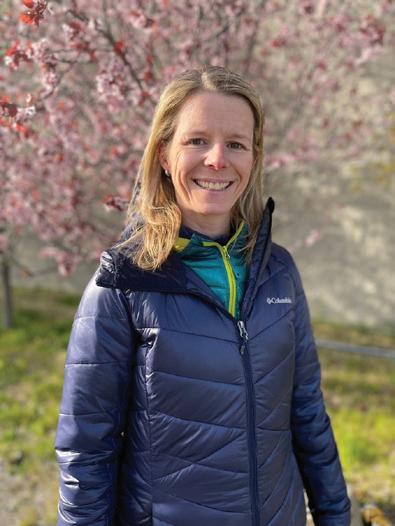 Cathryn Schwab
Cathryn Schwab
NORTH KINGSTOWN, RI
PSA Area 2
Ranking: Level VSFF
Ratings: Master Free Skate and Master Moves in the Field
Coaching Disciplines: Singles, Pairs, Skating Skills, Choreography


LAS VEGAS, NV
PSA Area 15
Rankings: L1-S, LFUN-NS, L2-SD
Ratings: Master Choreography, Master Moves in the Field, and Certified Free Skate
Coaching Disciplines: Freeskate, Choreography, MIF, Solo Dance, Showcase, Pairs
ANAHEIM, CA
PSA Area 16
Ranking: Level V Ranking
Ratings: Master Free Skating, Master Pair, Certified Moves in the Field
Coaching Disciplines: Singles, Pairs, Choreography, Power Skating
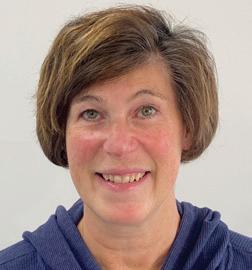
CHESAPEAKE, VA
PSA Area 6
Ranking: Level III

Ratings: Master Moves in the Field, Senior Free Skate, Certified Group
Coaching Disciplines: Singles (Moves, Freestyle, Adults, Choreography), Program Director for LTS, Aspire Skating Academy, and Skating Club. Manager of Coastal Blades Synchro

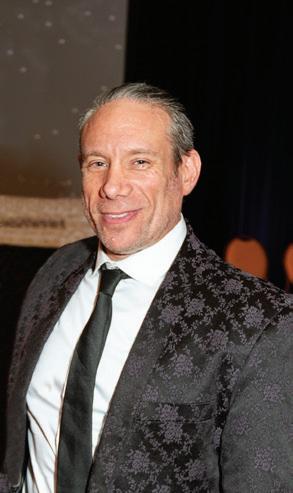
TAMPA, FL
PSA Area 7
Ranking: Level VII
Ratings: Master Free Skate


Coaching Disciplines: FS, Pairs, Moves in the Field, Choreography, LTS


I am a sports fan. I enjoy watching a vast variety of them. As I watch many games on TV or at sporting events I often wonder “what is going through the coaches mind?” How did they work and prepare their athletes to reach this critical point? What obstacles have they faced personally and with their athletes? What mistakes did they make through their journey to discover what works and doesn’t work? I also find it very entertaining to observe the differences in “sideline” behavior. We have heard of Vince Lombardi, Tom Landry, Don Shula, Pat Summit, John Wooden,
Phil Jackson, and so many others I can’t take the space to mention that were successful and their names still have such relevance.
Reading material from other coaches outside of figure skating has always been an interest for me. I read this article/blog written by Nathan Edick years ago. With the theme of “The Power of Why” for this edition of PS Magazine I recalled reading it and I thought it was ideal to share.
~ Denise WilliamsonCoaches have one of the most powerful platforms in young people’s lives. For many athletes, a coach will serve as a mentor, teacher, friend, and counselor. The coaching profession gives individuals endless opportunities to influence, empower, and inspire others. One coach can impact more young people in a year than most people are afforded in a lifetime. Every coach must remind themselves, with great power comes great responsibility . You give your players memories, for better or for worse, that stay with them until the day they die.
Why do you take the responsibility that comes with being called “coach?” Every individual has his/ her own reasons and motivations for joining the coaching profession. Your inspirations for coaching will ultimately define your coaching philosophy and how you communicate with your players. I strongly encourage that you ask yourself the following questions to delve deep into your own coaching narrative:

• Why do I coach?
• Why do I coach the way I do?
• What does it feel like to be coached by me?
• How do I define and measure success?
There are many young people playing sports who feel diminished and discouraged by the very activi-

ties that should strengthen, encourage, and vindicate them. It is imperative that we understand there are two types of coaches that exist: transactional and transformational.
Transactional coaches use players as tools to meet their personal needs for validation, status, and identity. They look for what they can get out of coaching and not what they can give. Transactional coaches often ignore the athletes’ developmental needs and often manipulate and distort the values of winning and losing. Many athletes obey these coaches out of necessity but never fully accept their belief systems or buy into their programs. Athletes develop a strategy to participate in the transactions. They activate the process of trying to satisfy their coach by exchanging their performance for their praise and acceptance.
In comparison, transformational coaches impart lifechanging messages; are other-centered; and use their platform to nurture and transform players. A transformational coach realizes the power of the coaching platform to inspire, motivate, and produce positive change in his/her players. The only way to coach young people is to seek to transform their sense of
their own worth, talents, and value. Athletes follow these coaches because they sense their authenticity and both parties believe in one another.
To better understand our coaching tactics, we must look internally into our own narrative and reflect on both our glorious and our hurtful experiences with sports and coaches. Backtracking and tracing the unfulfilled needs we felt as athletes will help us in determining how those unmet needs can drive us as coaches. Self-understanding leads to understanding others, which can lead to life-changing transformation. Great coaching demands introspection, integrity, and integration of the coach’s life history. This can be a grueling and challenging process to better ourselves as individuals but one that will allow us to understand our obligation is to coach for our players and not for ourselves.
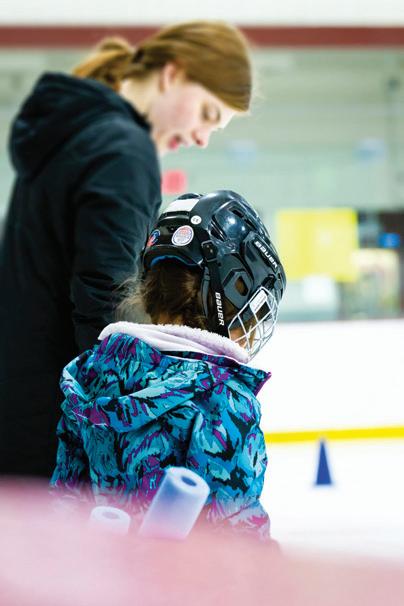

Nathan Edick is a coach and author for Just Hoops, a basketball training facility in central Ohio. Nathan has an extensive background in basketball as both a player and a coach. In his freshman season at Marietta College, he was No. 1 in the NCAA in three-point shooting and as a coach, Nathan has collegiate coaching experience at the NCAA Division I, II & III levels. More information about Nathan and Just Hoops can be found online at www.justhoopscolumbus.com
Reprinted with permission of the author
“What does it feel like to be coached by me?”

IJS: Immersive, Intensive, Interactive.
PSA has crafted a Summit that will encompass real-life coaching examples, tools, templates, and guidance via a carefully devised format. IJS will run all day Wednesday, Thursday, and Friday morning with the entire IJS faculty and virtual hosts having— at minimum—a national technical specialist appointment all the way up to Olympic technical panelists/judges.
In addition to the Summit focus of IJS, we know coaches appreciate the opportunity to learn additional topics so we added a bonus day of presentations which include a fusion of PSA's Foundations of Coaching, LTS USA, and Aspire programs in the Fostering the Future track. Tuesday afternoon will also offer attendees the option of exploring a Program Director track called Guide the Glide
Running parallel to IJS on Wednesday and Thursday, the Enrich Your Environment track will feature sessions that assist coaches in improving their rink and club environments via marketing, Skate Safe interactive sessions, and a Longevity after the Competition session to name a few.
After the Friday morning wrap-up session for IJS, we have an expert session called Excel at Excel. Running parallel to that session are four Strictly Solo Dance sessions to fulfill a track for the growing discipline and help coaches explore education in that area.
In-person Livestream
Member: $650 Member: $340
On-demand Member: $295
TUESDAY, MAY 23
MORNING
HOTEL
Hilton Orlando Lake Buena Vista @ Walt Disney World Resort 1751 Hotel Plaza Blvd Lake Buena Vista, Florida 32830
THE FUTURE Introductions & Welcome
SESSION 1: Joy & Safety
SESSION 2: Planning
SESSION 3: Learn to Skate USA Curriculum
Group Class Instructor Track Program Director Track
SESSION 4: Fun & Games
SESSION 5: On-Ice Classes & Elements

SESSION 6: Professionalism
SESSION 7: Aspire Mission & Vision
SESSION 8: Designing Your Aspire Program & Parent Information

SESSION 1: General Information & Human Resources
SESSION 2: Safety & Risk Management
SESSION 3: Scheduling & Marketing
SESSION 4: Programming for Diversity, Equity, and Inclusion; Diversifying Your Clientele; Diversifying Your Staff
SESSION 5: Business Plan; Business Management
THURSDAY, MAY 25 DAY 3: FRIDAY, MAY 26
EARLY BIRD WORKSHOP Program Content Sheet
The Tech Panel In Action 1 Pre Juv-Inter Programs
mission for the U.S. Olympic team at the 2002 Olympic Winter Games.
IJS Math, Scoring Details & Levels of Difficulty
Program Components Impact
Grade Of Execution & Applied Technique
IJS / Excel at Excel Strictly Solo Dance
EARLY BIRD WORKSHOP
IJS Yearly Planning & Strategies

Program Composition Strategies
PART 2
Grade Of Execution & Applied Technique
Turns & Steps Assessments
The Tech Panel in Action 2 Novice-Senior Programs
Session 1
Excel At Excel
Major rules changes; New pipeline; Decoupling tests;
Age banding
Session 2
Excel At Excel
Choreography in Excel programs
Solo Dance Session 1
What is Solo Dance?
Preliminary–Bronze

Intro to Free Dance Skater’s Choice Music
Constructing Music
Solo Dance Session 2
Intermediate Free Dance
Bronze and Pre Silver
The Variation Dance
IJS Levels
Solo Dance Session 3
Novice Free Dance
Silver and Pre Gold Turns & Spin Positions
Choreographic Movements
Solo Dance Session 4
Differences
Between Levels
Lunch and Newcomers Meeting
IJS Deep Dive Enrich Your Environment
Step Sequences Essentials
Spin Essentials
Jump Essentials
Q & A with All faculty
SkateSafe Scenarios
Marketing to Millennials, Training Alphas
Longevity Off the Competition Track
TRADE SHOW
Equipment Session by Jackson Ultima
PART 3
Grade Of Execution & Applied Technique Jump Assessments
PSA General Assembly Business Meeting
U.S. Figure Skating Governing Council Changes

EDI Awards Reception & Dinner President’s Reception
Summit Closing
WEDNESDAY EVENING MAY 24 & THURSDAY MORNING MAY 25
Gold & International Rhythm Dance New Elements AFTERNOON
Join us for our full display of exhibitors. This is a great opportunity to be fitted by the professionals, purchase direct from manufacturers, and view the latest in software, boots, blades, clothing, and more!
AsI’m sitting down to write this article, I’m celebrating!
I’m not the only one, either. On the eve of Black History Month, Starr Andrews’ pewter medal victory at the 2023 U.S. Figure Skating Championships was celebrated by news organizations across the United States. And of course they should be! Not only was Andrews’ performance an incredible one, but it was also the first time that a Black woman won a medal at nationals since Debi Thomas’s gold medal victory 35 years ago.
It is sobering to think that so much time has passed between these two historic events.
But this moment is also exhilarating. Slowly, we are seeing increased levels of participation by underrepresented groups in our sport. In fact, this year we saw not just one, but two(!) African American women who competed at nationals this year. In addition to Starr Andrews, Alexa Gasparotto also made a mark on history this year at nationals.
This is good news! It means that the hard work of coaches, clubs, and rinks who embrace DEI principals, as well as organizations such as Diversity Ice that focus on the development of inclusive programs and practices to boost participation in figure skating, have been successful and will continue to bear fruit.
In an interview with New York Amsterdam News, Gasparotto said that while she has not seen many Black figure skaters in the 15 years she has been a skater, she was inspired by France’s Surya Bonaly and her powerful skating. Gasparotto related her own realization that, just like Surya, she was developing into a powerful skater. She stated, “The fact that Surya looked like me made it that much more special.” It bears repeating: representation matters.
And if seeing underrepresented groups on the podium wasn’t enough, Andrews’ and Gasparotto’s participation at the U.S. Championships was significant for another reason, too. Their coaches—Derrick Delmore and Rohene Ward, respectively—are both Black and are both members of PSA’s DEI Committee. In 2023, there were more skaters and coaches of color who participated at both the U.S. Figure Skating Championships and at the High Performance National Development Camp than in years past. I am celebrating all of these things, too!

Today there is the growing likelihood that people

coming into the sport can see and will be inspired by people who look like them in skating and in coaching. The amazing turnout that we saw at Diversify Ice’s California SkateRaiser just a few weeks ago proves it. This is powerful and inspirational. For anybody who might be wondering why representation matters, or why this year’s U.S. Figure Skating Championships were such a historic event…this is why.
Here on the Eve of Black History Month, we can be hopeful for a bright future where everyone can see themselves thriving as skaters and coaches. We can look towards a future where anyone who wants to skate can feel like they belong and know without a doubt that skating is truly for everyone. And because of all of this…yes, I am still celebrating. I hope you will join me.
ABOUT: PSA’s Diversity, Equity, and Inclusion (DEI) Committee was formed with a goal to promote greater diversity in the membership and programming of the PSA. Made up of PSA Board members and members at large, the committee assists PSA leadership in the implementation of strategic initiatives that recruit, support, and retain members and staff from diverse backgrounds.
Darlene Lewis (CM, RFS, RG) is the chair of PSA's Diversity, Equity, & Inclusion committee. Alexa Gasparotto interviewed by Lois Elfman, New York Amsterdam News, September 20, 2022.


No matter what group lesson program your facility uses, a passing standard has been prescribed for each element in every level. As group lesson coaches, it is our duty to be mindful of these standards and adhere to them. But why are these national passing standards such a benefit to our skaters and to our programs?
Almost any group lesson coach can attest that by the time evaluation day comes, it is incredibly rare that all students in your class have achieved the passing standard for every single element. While there will undoubtedly be some skaters who have met every standard and are ready to move up to the next level, there will be others who have not. In this second group, you might see skaters who need to work towards mastery of several elements in that level, while many others may only be shy of the passing standard by one or two skills. What then?
This is where our job gets tricky. We have all faced this struggle. Is it best to pass the skater so they stay excited and don’t lose interest, or is it better to tell them to take the current class level again and hope they don’t get discouraged and give up?
To fully grasp what is best for the skater, we must first recognize something about our sport: we coach an incredibly complicated technical sport that becomes increasingly more complex as skaters reach higher levels of performance. As with any technical sport, learning to skate requires developing muscle memory in progressive stages.

Fortunately, this is exactly what the two most common group lesson programs in the United States do! Whether your rink or club uses the Learn to Skate USA or ISI curriculum, you are following a system that has been developed to break down the components of highly complex skills into bite-sized pieces. Since this work has already been done for us, all we need to do is make good use of it!
Both programs have a variety of resources available for coaches, including coaching guides, videos, mobile
apps, or workshops/seminars. Both programs have also established very clear official passing standards for each element, which should be understood as the minimum level of mastery a skater needs before moving onto the next level. From this lens, it can be argued that it would actually be a disservice to pass those skaters who are close, but still not quite passing. As much as we all want to avoid disappointing that skater now, passing them before they are ready will almost always lead to that skater struggling even more in the next level.
Passing a skater before they are ready can also be a safety concern. The skills taught in each level build directly from skills from previous classes. If a skater has not physically developed the motor skills or balance necessary for their current skills, asking them to attempt more advanced skills from a higher level can make a skater more prone to injuring themselves. Not a fun skating experience!
Instead, you will actually be doing the skater a service by having them retake the current class. By doing this, you are, first and foremost, helping keep them safe from injury by trying elements they aren’t ready to begin trying yet. You are also helping to prevent future frustrations or undue fear of future
elements. It will almost always be easier for the skater to overcome the smaller task of mastering a skill that was already “really close” and celebrating this accomplishment. By doing what’s best for the skater, you can be sure that they will continue to have a positive experience and stay interested in the sport.
How do I break the news to the skater and their parents?
Sometimes, the hardest part about having a skater retry a level is breaking the news to them and their parents. Consider the following talking points to help keep the conversation positive and encouraging:
• Talk about safety. Skaters and their parents are more likely to appreciate and respect your decision when they know you have their best interests in mind. Nobody wants to risk getting hurt during class.
• Talk about skill progression. Make sure parents and skaters know that each level uses the previous level’s skills as a foundation for learning new skills. This is why students are grouped primarily by skill level, rather than by age.
• Normalize the need to repeat levels. Make sure skaters and parents know that everybody learns at their own pace, and that’s okay! Make sure to emphasize that most skaters will need to repeat at least one class at some point along the way. This is totally normal, and it helps to make sure the skater won’t get “stuck” later down the road.
• Offer booster lessons. Many programs have formal booster lesson packages specifically for these types of situations. If not, you can still offer one or two private lessons without obligation to help the skater get more individualized attention. Just make sure to ask first whether they have their own private coach first!
• Encourage the skater to come to practice outside of class. Make sure that the parent and skater both know that additional practice time is necessary for mastering more advanced skills and will help them progress through the program more quickly.
Generally speaking, what’s best for the skater is also going to be best for the program. Adhering to the passing standards ensures that there is consistency within a program. Adhering to a national standard also helps skaters and coaches who might relocate to different parts of the country adjust more quickly to a new environment. No matter where you go, “Basic 1” always means “Basic 1,” and “Pre-Alpha” always means “Pre-Alpha.”
Keep in mind, however, that it isn’t uncommon
for programs to have their own unique needs. Here are some situations to consider:
• Has your program established higher passing standards? While the national standards set by Learn to Skate USA or ISI should be seen as the minimum level of mastery a skater must demonstrate, there are many programs across the country that hold their skaters to higher standards for each level.
• How quickly are you expected to move students into a new class? Due to program development and size, ice/class scheduling, or coaches’ availability, different programs may find it more critical to move skaters into new classes more quickly or slowly than usual.
• Does your program offer “half badge” or “in-between” levels? Sometimes, large numbers of skaters get stuck in certain levels, causing a bottleneck issue. As possible long- or shortterm solutions, a program director might offer a “halfway” class. For example, if your rink uses Learn to Skate USA, you might see Basic 5A/5B classes; in an ISI rink, Alpha 1/Alpha 2 classes are fairly common. These “halfway” classes can be the perfect “stepping stones” that allow kids to keep moving forward while also allowing the group coach in the second class to provide more focused instruction on the trickier skills. If your rink offers these types of classes, make sure you know what is required for each level segment.
Ultimately, remember that these national standards are like the glue that holds group class programs together. Since each program is unique, be sure to ask your program director and your fellow coaches what needs or expectations your program might have. And remember, when we work within the bounds of the national frameworks and their established passing standards, we can ensure the best experience possible for all group lesson skaters.

We’ve all been there—the practice is in progress, and when we look out across the ice, it appears that some of the athletes are beginning to develop some proficiency in the area of focus. Woohoo! They are starting to get it!
Then we get that dreaded question…“Why?” Cue the sounds of a screeching halt!
The focus of the group is completely gone, and most likely, the question asked fell into one of the following categories:
• Why are we doing this drill?
• Why do we have to work on this?
• Why can’t we…?
• Why are we in this order? I want to go first!
• Why do I have to do it that way?
Take a deep breath! When the dilemma arises, do we stop the flow of the practice session (even though it might already be stalled) and address the question? Or, do we give the “because I’m the coach and I say so!” response before pressing on?
Naturally there are many variables that go into the decision. How many coaches are present? What is the age group and level of the athletes? Is there a time crunch? How mentally fresh am I as the coach? (Or, am I too exhausted?)
I am an advocate of always answering the question, when feasible, in a manner that fits the age of the athletes. Why? (I’m assuming that was your internal response while reading!)
Perhaps most importantly: can you remember as a young athlete when a coach failed to respond to one of your “why” questions? I am guessing most of us can and that the memory is not a positive one. Did you leave that practice frustrated and confused? I have seen it many times over the years. The following quote from Sir John Whitmore explains my answer better than I can put into words:
“Coaching is unlocking people’s potential to maximize their own performance. It is helping them to learn rather than teaching them.”
Sir John WhitmoreEncouraging athletes to be curious and want to know “why” is the beginning of developing problem solvers. I know that I will not be present for every athlete in every situation to give them feedback and advice, and I am confident that is true for everyone. But I also have no desire to develop athletes that are

robots who only do what is asked and who do not develop their own best version of the skills. Helping the athletes begin to look at different possibilities, who understand how things work, and why some things work and others don’t, can open the door to a whole new level of understanding.
A curious athlete is one who wants to learn and gain more proficiency at their sport. An athlete with an open mind will retain more information, resulting in quicker development of skills. We all know that when our athletes are improving they enjoy their time on the ice the most!
An athlete who can problem solve is more able to navigate difficult and new situations even if they do not have their coach or family present. With the increasing prevalence of reported anxiety disorders, it is important to give the athletes tools to give them confidence.
So, back to answering the “why” questions:
• Do it when it is possible!
• Strive to incorporate the “why” when explaining the exercise or drill.
• Intentionally build on previous skills that naturally lead to future skills.
• Develop game-like situations to reinforce the why.
• Ask some follow up questions to determine what they are really wondering.
• Give some possibilities and have the athletes attempt to solve it.
• Use “why?” in your coaching, get the athletes to fill in the blanks.
• When it isn’t possible to answer at that moment, get back to the athlete and their question later.
At the end of the day, all of us are coaches who love the sport and appreciate the opportunity to pass on our knowledge and experience in ways that give our athletes the best chance to continue their development and their own love of the sport. While most of the athletes will not become “all-stars,” the experiences that we provide now through skating will guide them for the rest of their lives.
In an ideal world, all coaches coming into your facility would be well-trained, competent, and enthusiastic about their job. Let’s talk about reality, though. While these are critical qualities for effective coaches, this isn’t the reality that program directors often see.
Imagine yourself in this situation for a moment: it’s a busy learn-to-skate session and you need another coach to help ease the burden immediately. You hire someone and throw them to the wolves, putting them on classes right away. With fingers crossed and eyes squeezed shut, all you can do is hope that they do a good job.
Take note: hope is not an effective strategy here, or in any situation. As a program director, your best strategy is to be proactive and plan ahead. Having trained coaches at your facility ensures that your programming operates smoothly, so why not ensure they get trained correctly? Program directors can guarantee the best retention rates for their program when their coaches understand the program’s policies and procedures, adhere to consistent passing standards, possess strong class management and on-ice organization skills, adhere to safety protocols, and employ a diverse range of teaching techniques. Competent directors who want to make the best program possible tackle coaches’ training to minimize chaos.
Learning experiences are for all coaches, regardless of how long they have been teaching. The everevolving nature of this sport requires a commitment to continuing education.
• New hires with little to no experience
This group includes coaches who have never taught before, or those are at the beginning stages of their coaching career.
• New hires with outside experience

This group includes coaches with previous coaching experience, but who are new to your program.
• Experienced coaches from your program
This group includes coaches with many years of teaching experience who have been working for you and are already familiar with your program.
Training is continuous throughout a coach’s entire career. Below are some topics that are vital for skating directors to have coaches trained on.

• Safety (includes emergency action plans and injury prevention)
• Time off policies, including arranging for substitute coaches
• Problem solving and conflict resolution
• Customer service basics
• Chain of command
• Disciplinary structure, including hiring/firing
Structure of Skating Classes
• What curriculum does your program use?
• What are the passing standards for your program?
• What are the pipeline structures to other programs?
Class organization
• Roles of lead coach, assistant coach, and junior/volunteer instructors
• Attendance policies and procedures, including make-up class
• Off-ice procedures for beginning level classes
• Weekly and session-long lesson planning
• When and how to test
• Skill progression
• Traffic patterns
Freestyle Sessions
• Freestyle session policies (ex. payment policies, traffic patterns, right-of-way, and music procedures)
• Who’s eligible to skate and teach on freestyle sessions?
Expectations for additional programming and rink events
Training should occur on both a regular and as-needed basis. Sometimes the training may be mandatory, while other times it may be optional. Sometimes it can be mandatory for some coaches and optional for others. Remember: you can never overtrain your staff!
Consider what types of training sessions you should schedule based on your seasonal calendar. You may want to use these ideas as guidelines:
• Quarterly trainings or end-of-session recaps
• Training sessions before your busiest season(s)
• Pre-event meetings
• Any time policies are added, changed, or updated
• Midseason and end-of-year reviews
Training can be done in any location condu cive to learning. Using the old tried and true formats are great, but experiencing a different location can be exciting, which enhances the educational moment and makes your staff eager to come back for more. Ultimately, as the program director you will know what’s best for your staff.
• Off-ice training can happen at your facility, at an off-site location, or at a function attended by the group.

• On-ice trainings can happen during public sessions in a coned-off area, during group classes, or during low traffic times when the ice may not be fully utilized

• Virtually, through video conferencing platforms
The only wrong way to train is to not train at all. The two most common excuses that directors give for not training their staff are a lack of time, or the inability to gather all coaches at once. No matter what, there’s always a way to make training happen.
There are plenty of options to put together a large organized seminar, meeting, or experience.With a bit of planning, these options can truly impact your coaches.
Run an in-house, on- or off-ice meeting.

• These are great times to go over testing standards, class traffic patterns, and “tips and tricks” for teaching some of the harder elements. This is also a great time to ask for input from your coaches!

• Contact the PSA office to inquire about hosting an event or plan your program’s down-time to coincide with scheduled events that your group can attend.
• Share a new experience with your coaches that can be fun and educational. Think of attending the local ballet; going to an art exhibition, musical performance, or theater production; meeting with a costume or set designer; or taking a group class together.
Sometimes, it’s not possible to get your entire coaching staff together at the same time in one place. With some creative thinking, however, program directors can still ensure that quality training takes place.

• Mentor programs can be done many different ways. Think about having new hires shadow a seasoned coach for an entire learn-to-skate session or for another predetermined amount of time. The mentor will train on group class and freestyle session protocols, program policies and procedures, class set-up and organization, etc.
Class Take-Overs
• During a class take-over, have a seasoned coach or your assistant director run a class normally assigned to another instructor. (As the program director, you can also run the class take-over, too!) These “take-over” classes can be a fun way to introduce new ideas, techniques, traffic patterns, and games. They also help break up the monotony and are fun for the kids! After the class take-over, review with the coach. Find out what thoughts they have, what they learned, and what ideas they want to use for their own classes in the future.
• Use any 10-15 minute window you can find—time between classes, during an ice cut, etc.—to give staff quick updates, quick tips and tricks, or to answer any questions or concerns that your coaches have.
• At a time convenient for their schedule, sit down with each of your staff coaches to discuss strengths, weaknesses, and goals in a one-on-one setting. Discuss ways to reach those goals and ask how you can best support that coach on their journey. Then, at your next one-on-one, review your notes from the previous meeting with that coach and establish a new set of goals.
Clearly, having well-trained coaches on your staff is invaluable to any program. Now that you have your “why,” use these ideas to answer the “who,” “where,” “when,” and “how.” Go forth and enjoy the training process. Empower your coaches. Who knows, you might even walk away with a few new things yourself!
As former skaters and current biomechanics researchers, this question has concerned us for some time. You are probably familiar with innovations in other sports that have led to improved performances, better injury prevention, or more consistent judging. For example, the clap skate in speed skating and the low friction suits in swimming have dramatically improved performances. In sports medicine, research has influenced training plans and returnto-play protocols. Advances in video technology and computer algorithms have led to better refereeing in tennis and soccer. In figure skating there have been small changes to equipment, technique, and judging over the years; however, these are often done without the support of systematic scientific evidence, which could lead to more effective innovation than might otherwise be achieved.
What can be done to increase the influence of science in skating? In this article, we will discuss the historical challenges that skating faces compared to other sports and propose some ideas for improvement.
Over the past two decades, market forces have dramatically increased the collection and analysis of all kinds of performance related data. The use of data analytics—that is, the process of finding trends and answering questions based on data—really took off in the early 2000s with the publication of the book Moneyball. It told the story of a professional baseball team that got creative when faced with a limited budget. Turning to player performance statistics, they were able to find undervalued talent and succeed in building a winning team.1
Today, statistical probabilities regularly inform player evaluations, pitch or shot selection, and play calling strategies in professional team sports. High profile individual sports such as tennis have also begun to embrace the use of data in training and
 By Dustin Bruening, Sarah Ridge, and Mia Caminita
By Dustin Bruening, Sarah Ridge, and Mia Caminita
competition, too.2 Other innovations have come from wearable technology that can measure performance data such as heart rate, step count, and speed. Tracking this data during workouts has become popular in endurance sports, leading to more research on optimal training strategies. Improvements in equipment design are also often tied to this data. The desire to improve running efficiency, for instance, resulted in some of the recent changes in the design and materials of racing shoes.
Although data analytics and wearable technology have the potential to influence figure skating, as a smaller sport, it has been difficult to find financial backing for these projects since investment, research, and innovation in sport performance are typically driven by market size.
In addition to a lack of market incentives, there is a lack of research into skating injury management. In medicine and other fields, the term evidence-based practices became popular during the 1990s, which referred to the formalized use of scientific evidence to guide clinical practices.3 Initially, evidence-based practices contrasted with the way many physicians and trainers had learned their trades through apprenticeships and individual experience.
Over the past few decades, the widespread reliance on evidence has improved some medical treatments and created more standardization across providers. A number of large organizations now create and regularly update clinical guidelines or position statements that summarize best practices for preventing and/or treating injuries based on reviews of published research.4-6 Common examples of this are baseball pitch counts,7 return-to-play protocols following concussions,8 and anterior cruciate ligament (ACL) injuries.9
While injury management in figure skating has benefitted from broader investments in health care,
sport-specific research is limited. For instance, while a link between jump landings and overuse injuries is likely, there have been no large-scale attempts at tracking the number of attempted jumps during training or determining whether specific techniques might play a role in these injuries. To do this kind of research on a large scale, there must be coordination between governing bodies, coaches, athletes, and scientists—something that is currently lacking in the sport. Without this coordination, it is up to individual coaches to find and incorporate evidence-based practices from other fields, with no formal curating of literature performed on their behalf.
Figure skating’s tradition, artistry, and complexity contribute to our love of the sport, but also work together in some ways to resist scientific influence. Skating’s large artistic component constrains innovations in, for example, equipment, as changes not only need to improve function but also remain aesthetically acceptable.
Likewise, coaching requires both science and art. There is similar resistance to purely evidence-based practices in medicine and other fields, as an overreliance on data can interfere with the individuality and human side of these fields. Sometimes, what is helpful for one person is not captured in the group statistics that are used in most scientific research. This is somewhat comically illustrated by an old story about air force jet pilots who were given groupaverage sized seats in their planes, only later to realize that the average seat size fit no one.10 In general, the more complex the system, the more variability there is, and skating as a sport is extremely complex.
With all these hurdles, what can (and should) be done to more effectively merge science and skating? Here are a few suggestions:

1. Start experimenting with measurements. Existing measurement tools should be used to begin monitoring on-ice training sessions. Some of these have been previously introduced in this column and elsewhere (e.g. heart rate monitors and accelerometers).11 While measurements from individual coaches and skaters might not provide systematic research data, documenting a growing interest in these measurements could spur some commercial or university investments. Judging has been evolving since 2002 to become more quantitative; training methods should follow that lead and keep pace with increasing technical demands while monitoring and prioritizing athlete performance and health.
2. Borrow research from other sports. Coaches and trainers can and should borrow from existing literature in other fields. While challenging, this is already being done to some extent with off-ice training and conditioning as well as in the articles presented in this column.
3. Keep asking and sharing. The more that coaches ask for and share evidence-based practices with one another, the more likely formal implementation will be. Forming a critical mass of interested coaches, researchers, skaters, and parents could result in increased collaboration, conversation, and identification of priority research areas to target.
4. Stay involved. As competitive skaters retire and look to shift their role in the sport, we hope that some will stay involved in a variety of scientific and leadership capacities to provide an internal spark, driving innovation from within.
5. Be patient with failed attempts. While technology is good and getting better, it takes time for innovations to succeed, particularly with the challenges skating faces. Not all measurements are useful, and failed attempts may create resistance to future innovation. Patience and collective involvement could bring positive changes to this beautiful sport.
References:
1. Lewis, M., Moneyball: The art of winning an unfair game. 2004: WW Norton & Company.
2. Springer, S. Analytics in Tennis Has Been an Evolution, Not a Revolution. The New York Times, 2022.
3. Sackett, D.L. and W.M.C. Rosenberg, On the need for evidence-based medicine. Journal of Public Health, 1995. 17(3): p. 330-334.
4. American Physical Therapy Association Position Papers. December 5, 2022]; Available from: https://www.apta.org
5. National Athletic Trainers Association Position Statements. December 5, 2022]; Available from: https://www.nata.org
6. National Athletic Training Association Position Statements. December 5, 2022]; Available from: https://www.nsca.com
7. Lyman, S., et al., Longitudinal study of elbow and shoulder pain in youth baseball pitchers. Medicine and science in sports and exercise, 2001. 33(11): p. 1803-1810.
8. May, K.H., et al., Pediatric sports specific return to play guidelines following concussion. International journal of sports physical therapy, 2014. 9(2): p. 242.
9. Flagg, K.Y., et al., Current criteria for return to play after anterior cruciate ligament reconstruction: an evidence-based literature review. Annals of Translational Medicine, 2019. 7(Suppl 7).
10. Stein, S. The Myth of the Average. Psychology Today, 2013.
11. Vescovi, J., Wearable Technology to Monitor Training, in PS Magazine. 2022, Professional Skaters Association. p. 10-12.
Sk8 to Elimin8 Cancer™ is the nationwide peer-to-peer fundraiser for the Scott Hamilton CARES Foundation, empowering the community to join the fight against cancer by funding critical research




Host a Frozen 5k or Ice Show as a fundraiser

“I see a day where everyone survives cancer. A day when no one suffers their way through their treatments. Our body holds the keys to surviving this insidious disease, and only through the research we are funding that we can unlock the keys to a much brighter futurea future celebrating survivors.“ - Scott

Raise funds for cancer research and receive fundraising rewards at the end of the event
 Hamilton
Hamilton
Honor those impacted by cancer and skate towards a better future for the next person diagnosed
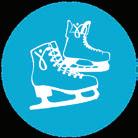





If you were to be asked why having a healthy diet is important, you could probably come up with a variety of reasons fairly quickly. We know that by incorporating fresh, natural foods in our diet, we can lower the risk of cardiac disease and cancers, strengthen bones, support muscles, and manage weight.

Generally, athletes pay even more attention to their diet than the average person does. Athletes and coaches know that food is fuel, which is why healthy diets are so important. After all, what an athlete puts
in their body has a direct impact on training and performance. Athletes (and coaches!) should focus on choosing healthy, nutrient-rich foods that fuel their skating.

Once an athlete understands WHY fueling their body is important and how to best do it, they have the competitive edge. By following these simple tips, the skater (or coach!) will be well-fueled and hydrated, all while eating foods they enjoy!
When making food and beverage choices, it’s helpful to think about the power of WHY. Here are a few healthy tips that can help promote healthier diets and optimal skating:
WWholesome foods. Fresh, wholesome foods are the best choice for an athlete because they are unprocessed and nutrient-dense. A healthy athlete’s diet is one that is rich in calcium, iron, vitamin A, and vitamin C. Eating a colorful diet of wholesome foods will ensure that you are getting the recommended amounts of each vitamin and mineral. Eating foods that are fresh have a much better taste than “healthy” processed options. Try making your own granola bars or trail mix instead of going for prepackaged ones, and then pair them with different fruits. Wholesome foods have more fiber, more antioxidants, and more nutrients. Plus, they tend to be much more cost effective, too!
HHydrating liquids and foods. Hydration is key to keeping athletes healthy and performing their best. Dehydration can cause fatigue and muscle cramps, which can lead to a decrease in athletic performance. Dehydration is more common for athletes who participate in winter sports; being cold increases the need to urinate and tends to block athletes from feeling thirsty. Water is the gold standard of hydration, but any fluids will count towards hydration status—even coffee! Did you know that an estimated 22% of hydration may actually come from foods? Watermelon, strawberries, cantaloupe, peaches, oranges, cucumbers, lettuce, broths and soups, tomatoes, and grapefruit are all foods that have a water content above 85% and help hydrate our bodies. Fill your meals and snacks with these hydrating options, and don’t forget to carry a refillable water bottle with you to practice.
YYummy foods. While it is no secret that healthy foods are important for athletes, it is equally important that our diets have “yummy” foods that we enjoy. No one should be trying to stomach healthy foods that don’t taste good. Find foods that are equally nutritious and enjoyable, and build daily meals around that. Don’t forget: food is one of life’s pleasures! It is important to allow yourself to enjoy small portions of your favorite foods, in moderation. Denying foods that you enjoy can lead to unhealthy relationships with food, including binge eating.
The PSA is truly a special organization. It doesn't matter where in the world you live...as members of the PSA, we are all part of the same community. In this new section, we celebrate that community. We encourage you to celebrate with us and join the conversation!


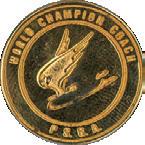


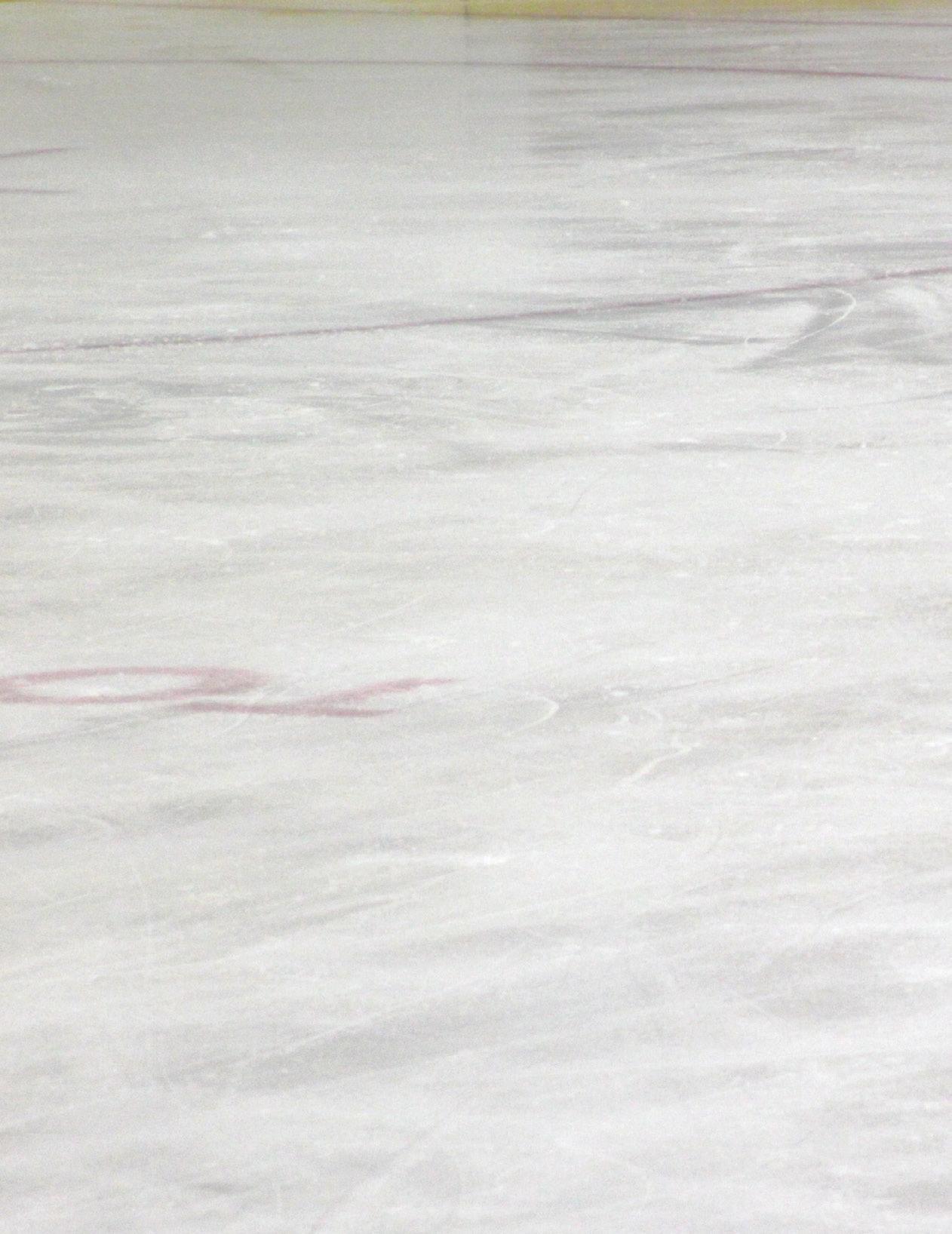
Abagale Abear
Eden Adams
Ahmad Ahmed
Chanelle Alejo
Crystal Araujo
Courtney Belgrader
Adriana Berg
Antonia Bessey
Anna Blankenship
Kyra Boyd
Crispin Bryan
Yulia Chuzhakina
Addalai Clark
Melodee Clysdale
Angelica Gabriela
Cuervo Serrato
Anne-Marie Daggett
Chandley Daniel
Devyn Delaura
Mary Beth Dineen
Sophia Drake
Goku Endo
Alexa Estereicher
Valeria Flores
Anna-Laura Galdamez-Arce
Ashley Gaskin
Zachary Grant
Julie Grenaille
Molly Hare
Christina Holladay
Kelsey Houchen
Jamie Jacks
Aimee Jacobs
Jessica Kemper
Eleftheria Loughlin
Elliana Mcfarlane
Blake Mcgee
Tessa Mcintire

Amy Mcpartland
Ann Marie Miller
my name is
Kristin Wallin
Brianna Hatch Moffett
Jimmie Santee
Elise Falconer
Alice Ho
Jimmie Santee
Kelli Kae Clark
Jimmie Santee
Danny Tate
Jimmie Santee
Jimmie Santee
Alexei Mantsorov
Jimmie Santee
Julie Cardinale
Marisol Paiz Trueba
Jimmie Santee
Jannika Lilja
Lisa Blue
Jimmie Santee
Tisha Walker-Green
Angela Nikodinov
Jimmie Santee
Gerry Lane
Yesenia Naranjo-Gilroy
Tammy Jimenez
Anne H. Goldberg-Baldwin
Peter Biver
Jason Wong
Jimmie Santee
Debbie Dimartino
Beth Brown
Margaret I. Detwiler
Kymberly Tompkins
Kimberly Reehoff-Johnson
Jackie Brenner
Kim Navarro
Jimmie Santee
Nathan Birch
Renee Romanus-Miller
Jordan Mueller
Haylie O'Bey
Clarissa Pace
Johnny Pelletier
Vanessa Pham
Grace-Ann Porpeglia
Amelia Reese
Annabelle Rie
Grace Roskos
Electra Scheiner
Alexa Scholl
Thomas Schwappach
Marymary Scuilla
Jan Seybold
Renee Siano
Sierra Story
Sara Taff
Jia Tian
Tomas Verner
Sarah Vincent
Kelly Walsh
Amelie Wilson-Bivera
Elizabeth Woodstra
Emily Zieman
Jimmie Santee
Abigail Hejda

Jimmie Santee
Jimmie Santee
Roman Zaretsky
Linda Cowper
Jimmie Santee
Amanda Farkas
Hope Roskos
Jimmie Santee
Karen Lobosco
Ben Agosto
Jimmie Santee
Angela Johnstad-Beyer
Jaime Wendt-Wustenhoff
Krista Keay
Craig Maurizi
Jimmie Santee
Tammy Sutan
Jimmie Santee
Robyn Sudkamp
Jennifer Schneble
Hailey Kachmarchik
Heidi Parker
Do


Help them get a head start on their coaching career, and encourage them to join PSA!



you know coaches who are new to the profession?

PRESIDENT Patrick O'Neil
VICE PRESIDENT Carol Murphy
TREASURER Scott McCoy
SECRETARY Gerry Lane
BOARD MEMBER
Paul Wylie
Carol Rossignol
Tim Covington

Kelley Morris Adair
Jill Maier-Collins
TRUSTEE
Richard Dwyer
Robbie Kaine
Wayne Seybold
Moira North
Curtis McGraw Webster
Skaters' Fund –
Donation Levels:
• Platinum $10,000+
• Diamond $5,000+
• Gold $1,000+
• Silver $500+
• Bronze $100+
Recognition opportunities for donors available
The Professional Skaters Foundation was founded to expand the educational opportunities of PSA members through a 501(c)(3) non-profit, charitable foundation. The trustees of the PSF have developed several scholarship programs for its members through a selection process based on established guidelines and criteria, and the Skaters’ Fund assists all coaches and performing skaters who need financial assistance due to sickness, disability or age.
All contributions to the Foundation are subject to IRS rules regarding eligibility requirements. Your generous gift may be 100% tax deductible. www.skatepsa.com/foundation
In PSA’s Foundations of Coaching course, the first unit is called “The Joy of Teaching, The Joy of Coaching.” In this unit, my co-facilitator and I talk about the power of yet and the concept that a coach can change an athlete’s thought process using a growth mindset.
The essence of the word “yet” helps the skater realize that the skating skills they are learning are worth waiting and working for and, while skating is not always easy, it is the power of the word “yet” that illustrates the possibilities for success.

So, too, are the possibilities for success in the coaching and performing world.
While coaching or performing is not always easy, creating success and learning that some things are worth waiting for is just as important in our profession as it is for our athletes. Coaches need to have the same growth mindset that we ask our skaters to have and believe that, with the help and guidance of our colleagues, we, too, have endless possibilities for success.

The PS Foundation seeks to provide resources that will help each of you achieve success, whether you are a career coach or a performing skater. Through donations, both large and small, we create opportunities for you to grow and develop through education. The Don Laws Apprenticeship Scholarship, the David Shulman Leadership Scholarship, and the Walter and Irene Muehlbronner Scholarship are available to each of you. The Skaters’ Fund continues to be available to coaches who require assistance due to sickness, disability, or age.
The Foundation encourages each of you to adopt a growth mindset and work towards your future as a coach or performing skater.
Newsclipping: January 4, 1889 — Felt Raabet ("Battle Cry") was a Norwegianlanguage weekly newspaper published in Minneapolis, Minnesota from 1887 to 1889.




CHRONICLING AMERICA: HISTORIC AMERICAN NEWSPAPERS.




LIBRARY OF CONGRESS.



It was in this later part of the 19th century that “fancy skating” started to become what we now know as modern figure skating. The father of modern figure skating, of course, was Jackson Haines. As an American, Haines studied ballet in France and was the first skater to put form into figure skating. His spinning to music shocked American skaters—they wanted none of it.
Undeterred, Haines went to Europe on an exhibition tour. The skating community in London gave him a very cool reception, and Stockholm’s was only a bit warmer. However, when he reached Vienna, the city went wild. There, he taught the Viennese how to waltz on ice, formed the Vienna School of Skating, developed the “International Style” of skating, and invented the sit spin. He also added the first toe pick to skates in the 1870s, making more difficult jumps possible for figure skaters.
During his travels, Haines also coached many early stars of the sport, including Leopold Frey of Austria. After Haines’s death, Frey won the first recognized international figure skating competition, The Great International Skating Tournament, in Vienna in 1882.
Interestingly, at this same event, the third place finisher was a Norwegian speed skater named Axel Paulsen. Paulsen, who arrived from Christiana (now Oslo) to compete, debuted the Axel jump he invented during the “special figures” component of the competition. Haines

and Paulsen had previously met in Norway; at that time, Haines encouraged him to adapt his athletic Axel jump, first performed on speed skates, to one performed on figure skates. Paulsen, who welcomed the suggestion, added a pick to the front of his figure skates so that he could land backwards more easily.
Though Paulson was an accomplished fancy skater, he was even more well-known as a famous speed skater. In the 1880’s he introduced the style of clasping arms behind back in distance events, and he was also known for designing a radically new and lighter skate. Paulsen’s first trip to America was in 1884. Competing in a 25-mile race in Brooklyn, New York, he won the title of Champion Skater of the World by besting the best skaters from America, Canada, and Norway. Returning to Europe, he continued to break records, ranging in distances from 5 miles to 100.

However, in 1888, Paulsen was defeated by another Norwegian skater, Harald Hagen, who was eleven years younger. It was at this point of his career that Paulsen decided to accept an invitation to come to America, sent by members of the Normanna Society in Minnesota.
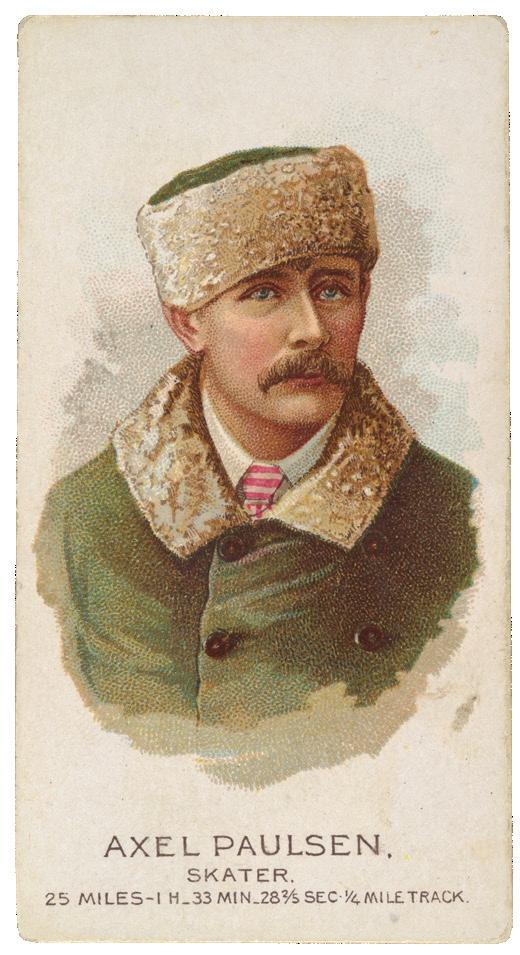
On Tuesday, January 1, 1889, Axel arrived in Minneapolis directly from Paris, France. Shortly after arriving in Minneapolis, Paulsen gave an exhibition of fancy skating at the Morton Rink, on the corner Eleventh Street and Fourth Avenue South. As advertised in the Minneapolis Tribune, “Some of his prizes and several different styles of skates are on exhibition at S. G. Morton's store. In his exhibitions he gives all of the figures in the ‘school exercises’ and also does some marvelous feats in high jumping, vaulting and somersaults.” One report said while performing on Lake Como, he even did trick jumps over a team of mules!


Later, the Tribune reported:
“One of his most difficult leaps is one where, after acquiring a good rate of speed, he makes an outer curve, then leaping high in the air, turns completely around before landing and completes the figure by spinning on both feet. This is regarded as his most difficult feat [...] Another difficult feat is the back spring. Lying flat on
his back, he makes a spring from his shoulders, lightning on his feet. This is difficult enough on a floor with light shoes, but it is infinitely more difficult on smooth ice, with a pair of skates attached to the feet. He also turns head springs and somersaults with the greatest ease. These are but a few of the most difficult feats.”
The newspapers regularly published information about Paulsen’s fancy skating, as well as numerous race challenges addressed to him. One such event was a race with Rudolph Goetz, the defending Champion of America. Goetz made the best American times for 20-, 30-, 40- and 50-mile races and managed several rinks in St. Paul and Minneapolis, including the Morton Rink. On January 10, Paulsen and Goetz met at the Minneapolis Tribune offices and signed articles for a 20-mile race to occur at a rink in Minneapolis within two weeks. Whoever won would win the title of Champion of America; for Goetz, winning also meant that he would be the champion long distance skater of the world.


Leading up to the race, it was reported that Axel severely strained the muscles of his back while training. It was also reported that Goetz was suffering from winter cholera and it was feared that he would not be able to enter the race at all. Although he recovered mildly with a careful diet and proper treatment, he was still not in great shape for a long race.
The race between Axel Paulsen and Rudolph Goetz, which had been widely talked about, finally took place on January 27. Initially scheduled to take place at Goetz’s Morton Rink, the race was moved to the South Minneapolis Ballpark. The track, which was six laps to the mile, was staked off and measured by an official surveyor; by the time of the race, it was reported to be in “splendid condition.”


There were numerous bets on the race and a lot of money was at stake. The Scandinavians enthusiastically rooted for Paulsen while a number of Goetz’s friends from Milwaukee, also with pockets full of money, cheered for him.
Paulsen’s stroke—described as long and powerful with little sway of the body—gave him a major
“This is difficult enough on a floor with light shoes, but it is infinitely more difficult on smooth ice, with a pair of skates attached to the feet.”
advantage on the straightaways. His skates were curious pieces of workmanship. Designed by himself at a great expense, they were said to extend at least six inches beyond the foot. Paulsen’s long blades gave him quite an advantage on the straightaways, but when the track became “rutted,” they became a disadvantage and would sink into the ice. The extreme length of the skate also made it difficult to perform good crossovers, making the greater number of laps to the mile a huge advantage to his opponents.

On the other hand, the well-conditioned Goetz had a slightly shorter stroke than Paulsen’s, but one that was quicker and equally as strong. He skated each match on Barney & Barry runners, one of the most popular brands of the day.
When the day of the race came, between 5,000 to 6,000 people crowded the grandstand. The weather was moderately cold, but a stiff north wind made it unpleasant for the spectators. The race was to have begun at 2 o’clock sharp, but when that hour arrived, spectators were still coming by the hundreds. Just before 3 o’clock, the race finally began. Paulsen easily took the lead and never fell behind. Long before Goetz quit, it was plain; he was out of the race. By the end of the fifteenth mile, Paulsen’s manager decided that it was “folly” to allow the race to proceed further. Paulsen easily won the race. Breaking the world record, he finished the twenty mile race in one hour, eight minutes, and thirty seconds.
Prior to the race, the contestants had been served notice by the authorities that the race was in violation of local Sunday ordinances. Having raced anyways, both Axel Paulsen and Rudolph Goetz were arrested for being “persons ‘aiding and abetting’ a skating race.” Newspaper reporters were also arrested, along with Axel Paulsen’s manager, W. W. Wettelson. The papers also reported that there were to be other arrests, which would include a number of policemen who "aided and abetted" in the unhallowed sport by enabling spectators to watch the race.



The court case was surprising to many, as “Sunday amusements” of a national nature had frequently been permitted. Shortly after a judge named Mahoney took the bench, Paulsen, Goetz, Wettelson,

“...if you have skating races here, you won ' t have them on Sunday.”
Newsclipping: January 28, 1889
St. Paul Daily Globe CHRONICLING AMERICA: HISTORIC AMERICAN NEWSPAPERS. LIBRARY OF CONGRESS.
and both newspaper reporters pleaded guilty. The judge bore down with surprising severity, fining Paulsen, Goetz, and Wettelson $50, or 60 days at the workhouse. Even the new assistant county attorney, whose political experience had accustomed him to surprises, was caught with his mouth open.
The profits of the race seemed to be of great interest to the judge presiding over the case. According to one Officer Walton, there had been anywhere from 5,000 to 10,000 people present at the race. Mr. Wettelson stated that only 2,400 spectators had paid the 25-cent admission, surmising that the remainder gained access through a broken fence. Mr. Wettelson said he participated in the profits, and both skaters admitted that they worked their pedals for money. Judge Mahoney concluded the trial by saying, “Well, if you have skating races here, you won't have them on Sunday.”

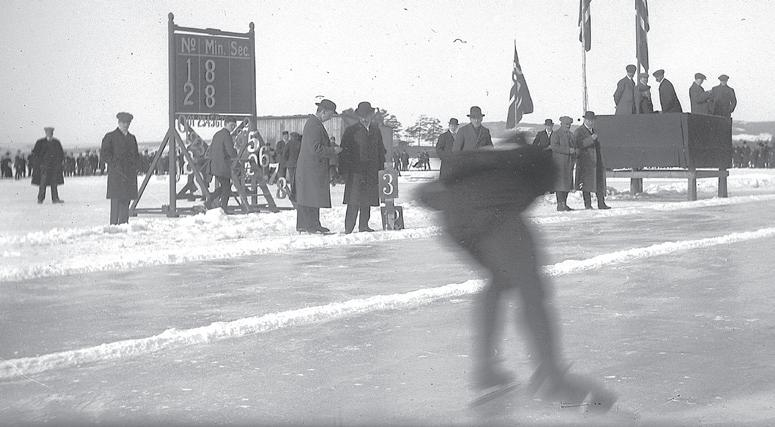
…to be continued. See our next issue for the next part of the saga!
Information for this article was gathered from the following sources:
Abilene Weekly Reflector. 1889. The Evening World. 1889.
Hines, James. Figure Skating: A History, 2006. The Minneapolis Tribune. 1889.
Mower County Transcript. 1889. St. Paul Daily Globe. 1889.
PHOTOS: (CC BY-SA 4.0) OSLO MUSEUM



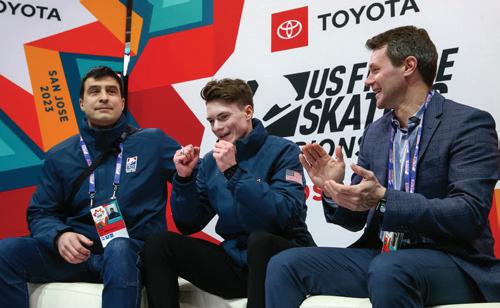


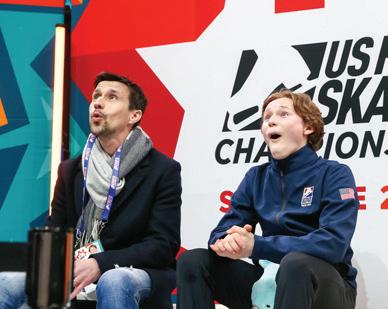

Doug Mattis was a longtime member of PSA. He was master-rated in choreography and had a senior rating in free skating. He was heavily involved in our sport and in the PSA, which included presenting at numerous educational events and serving on the Board of Governors. He will be greatly missed and we share our deepest condolences to the Mattis family.


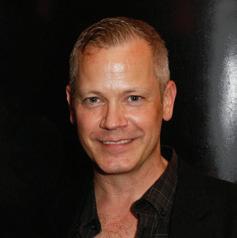

Reprinted and edited, with permission of the family. Our family received word Thursday, February 9, 2023, that my brother Doug Mattis passed away from a very long illness. Doug was 56. I’m not sure how many of you knew my brother personally, but he knew what seemed to be millions of people all around the world. He was a championship figure skater which made him a celebrity in those circles.
Doug lived his life the way that he wanted to live. He always made his own choices and he stood by his personal beliefs. Sometimes his decisions weren’t the “popular choice,” but he drove that direction 100%, regardless, and dealt with any ramifications that came about. He was a free spirit, to say the least.
Most of the skating world embraced and loved him very much. Doug became a champion for human rights and fought against discrimination of any kind against anybody, especially the gay community. He was not afraid to lose friends over his beliefs, actions, or words.

In the end, he became very private and rarely reached outside of a very small circle of loved ones. His pain and illness were so severe at times, I wasn’t sure how much longer he could last. We knew this day would come eventually. Those who knew him from the past often wondered where he had gone and what had happened to him.
But that was, again, his choice.
He didn’t want people to see him the way he was or feel sorry for him and make a fuss. I’m sure he wanted everybody to remember him as he was "before." He often told me, “One day, I’ll just walk out into the ocean to never be seen again.” Figuratively speaking, that’s exactly what he did.
Dates March 18, 2023
Event PSA Seminar
Location Ice Den Scottsdale, Scottsdale, AZ
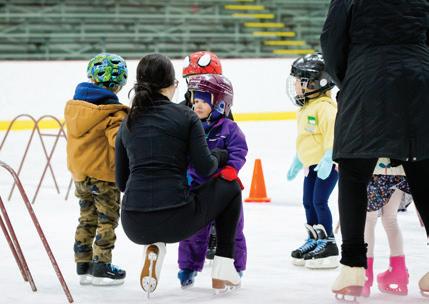

Credits PSA Credits – 5

Deadline February 20, 2023
APRIL
Date April 1, 2023
Event PSA Endorsed Event / Grassroots to Champion

Location The Pond, Chagrin Falls, OH
Credits PSA Credits – 6
Registration nrksk8@netscape.net
Dates April 23, 2023
Event Virtual Ratings – Registered and Certified levels only in all disciplines

Credits PSA Credit 1
Lottery Opens February 20, 2023
MAY
Dates May 23, 2023
Event In-Person Ratings at Summit – Senior and Master levels only in all disciplines, except TOI
Credits PSA Credit 1








Reflecting on our coaching journeys, honoring those that inspired us, and sharing what we've learned with the next generation of coaches and athletes.
